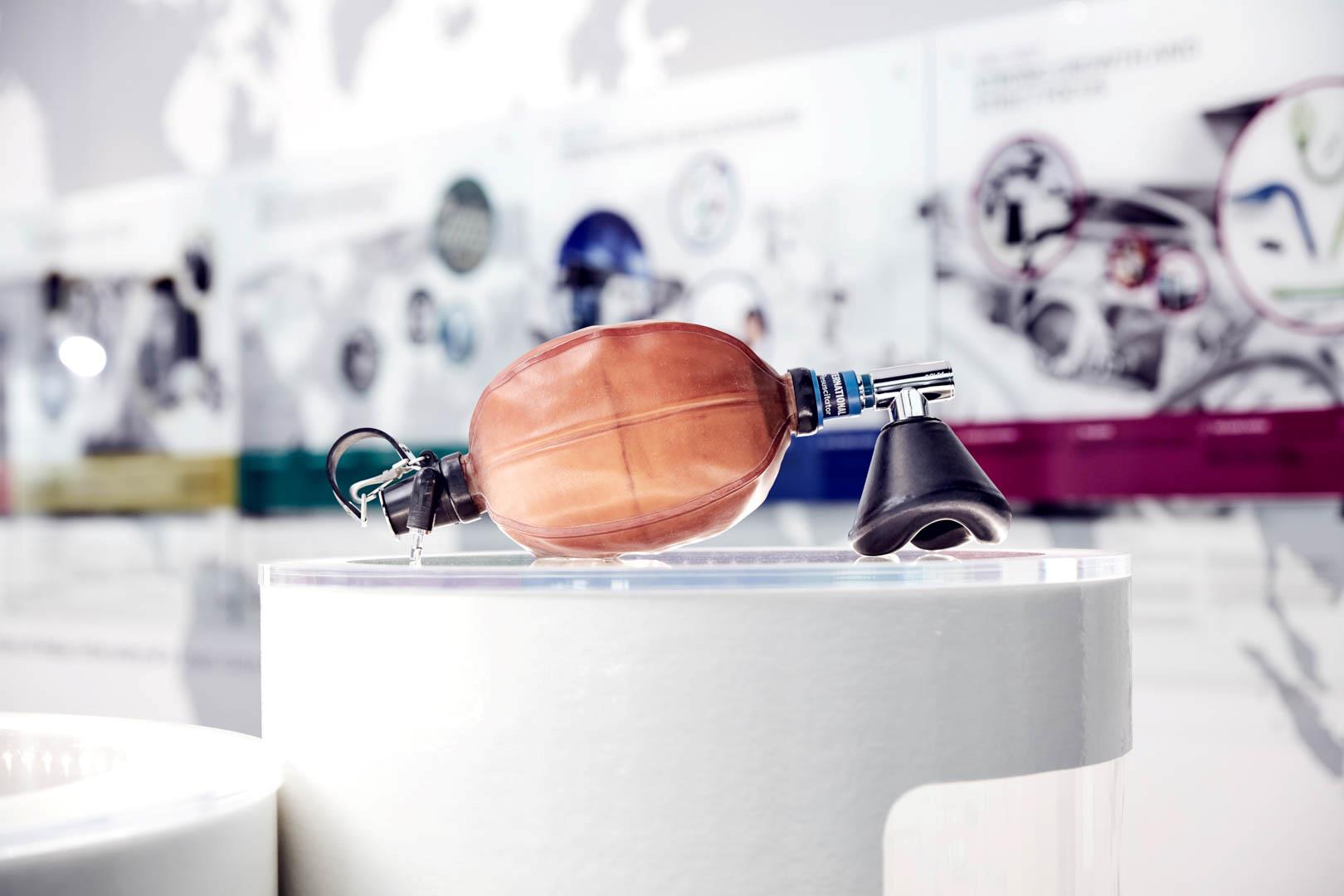Ambu in brief
At Ambu we develop, produce and market diagnostic and life-supporting devices for hospitals and rescue services. Ambu has three business areas:
- Visualization
- Anaesthesia
- Patient Monitoring & Diagnostics
Our most important products are ventilation bags for artificial respiration, visualisation devices, masks, circuits and single-use electrodes for ECG tests and neurophysiological mappings.
We sell our products all over the world. Approx. 98% of our products are sold on export markets through Ambu’s sales companies or distributors.
Ambu is listed on NASDAQ OMX Copenhagen.
Number of employees
Ambu employs approximately 3,000 people across North America, Europe and the Asia-Pacific.
Sales companies
Ambu USA
Ambu Germany
Ambu United Kingdom
Ambu France
Ambu Netherlands
Ambu Spain
Ambu Italy
Ambu Australia
Ambu China
Ambu India
Ambu Nordic
Ambu Japan
Production companies
Xiamen, China
Penang, Malaysia
Noblesville, USA
Key figures
Revenue: DKK 2,355 million
Gross margin: 56.5%
Organic growth: 14%
(financial year: 2017/18)
80 years of innovation
Ambu was founded in 1937 by Dr. Holger Hesse, who had come to Denmark from Germany.
Dr. Holger Hesse developed and manufactured the Sicca Haemometer; a product that enabled doctors to measure the blood count in a patient’s blood without having to send blood specimens to an external laboratory for analysis. The Sicca Haemometer was a success, partly because it was innovative, partly because it was extremely user-friendly and of top quality.
A world sensation: The Ambu Ventilation Bag
In 1953, Dr. Holger Hesse met the Danish physician Dr. Henning Ruben and a fruitful teamwork began. Together they invented the Ambu Ventilation Bag, which was a revolution within resuscitation. The ventilation bag was the first portable resuscitation device that worked without a battery or an oxygen supply. The Ambu ventilation Bag is produces to this day and is used all over the world by hospitals and rescue services.
Ambu was also a pioneer in the development of manikins for first aid training. The first training manikin was introduced in 1957.
The small company grew large
Right from the outset, Ambu was internationally orientated, and in the 1970s and 1980s the company grew enormously and expanded to include own sales companies outside Denmark.
As a part the growth strategy, Ambu has made several acquisitions. In 2001, Ambu bought the electrode company Medicotest and thus entered the area of diagnostics. In 2012, Ambu acquired Unomedical’s electrode business. Most recently, the large acquisition of US based King Systems followed; making Ambu one of the world’s most focused companies within anaesthesia.
From a single room to several factories
Ambu’s first product – The Sicca Haemometer – was manufactured in a rented room in Copenhagen. Today, Ambu has factories in China, Malaysia, UK and the USA. For more than 80 years Ambu has developed new and better products to improve the quality of patient care.



